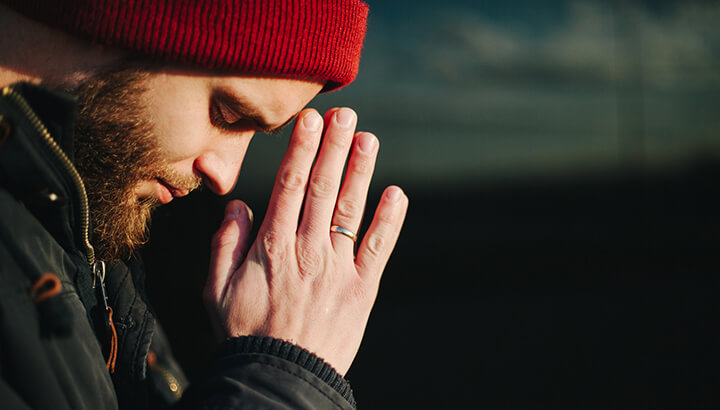We’re always looking for ways to enhance healing and happiness. Some of the best techniques have been with us for years, like ho’oponopono, the Hawaiian practice of forgiveness. If you’ve never heard of it before, don’t worry. We’ll walk you through the practice and why you should make it a regular part of your self-care.
What is ho’oponopono?
Ho’oponopono is a practice from Hawaii that revolves around forgiveness and connection. “Ho’o” means “to make” and “pono” means “right.” The repetition of pono means to make “doubly right,” according to Matthew B. James, MA, Ph.D., and president of Kona University.
The process differs depending on its heritage. As Dr. James explains, the state of Hawaii is divided into four counties with city and county governments. The reason behind this, he says, is the state was once divided into several kingdoms, with Hawai’i, Maui, O’ahu, and Kauai being the largest. Despite how geographically close the islands are from one another, communication could cease between kingdoms for hundreds of years, so the practice of ho’oponopono evolved a little differently in each place.
Some islands practiced ho’oponopono face to face, while others used a mediator as communication between the two parties. Ho’oponopono can also be practiced alone as a mindfulness exercise. It is the latter method that most non-Hawaiians use today.
How to practice ho’oponopono
The practice of ho’oponopono centers around four phrases:
- I am sorry.
- Please forgive me.
- I love you.
- Thank you.
The practice begins with “I am sorry” and “please forgive me” as a way a cleaning the practitioner of negative feelings. It may feel counter-intuitive to start this way — especially if you don’t really want to forgive someone — but starting off like this can be viewed as something you’re doing for yourself. As the ubiquitous quote says, “Resentment is like taking poison and waiting for the other person to die.”
Allow the first half of the practice to clear that resentment and hurt. Letting go and forgiving someone does not excuse their behavior. It simply opens you to the possibility of letting go of the pain. It is in this spirit that you should practice ho’oponopono.
The next two phrases, “I love you” and “thank you,” add gratitude and love to the practice. Gratitude has been shown to improve not only your mental health but also your physical health.
As an individual practice, ho’oponopono can be done through meditation or as a journaling or letter-writing exercise. To whom you address your plea for forgiveness depends on what you need at the time.
You can use ho’oponopono to forgive yourself or someone in your life. You can also use it to boost your gratitude for the world in its entirety, or your local community. Its universality makes ho’oponopono an exercise that you can practice daily in a different way.
How to try ho’oponopono as a writing exercise
As a journaling or letter-writing exercise, simply settle into a cozy spot where you won’t be disturbed and visualize to whom you’d like to address the practice. Begin by writing “I am sorry” as many times as you would like. If you’re unsure, I often recommend writing it out three times as a nice target.
Continue with the next three phrases: “Please forgive me,” “I love you” and “thank you.” Sit with each phrase for a bit and really absorb them. When you are done, you can even journal about the experience and the thoughts that have come to the surface for you. You may not want to send that letter, but the process is valuable in itself.
How to mix ho’oponopono with meditation
Another way to practice ho’oponopono is through meditation. You can simply add the phrases to your meditation as you would during an affirmation or mantra meditation, or you can follow the simple script below:
Begin by sitting comfortably on your cushion and close your eyes.
Taking notice of your breath, begin by visualizing yourself surrounded by beautiful, healing light. You might even imagine the concept of safety as a color. Drape yourself in this color.
Next, draw to mind the person or people to whom you’d like to extend forgiveness. If the session is for yourself, then imagine looking at your reflection in a beautiful mirror.
Begin by saying in your mind, “I am sorry.” Repeat it as many times as you’d like. Notice how your body feels when you “say” it.
Next, add, “Please forgive me.” As with the previous phrase, repeat it as many times as you’d like.
Take a moment to tune into your breath again and reground yourself if you need to.
Next, in your mind, say, “I love you.” Repeat it as many times as it feels comfortable. Notice how your body responds to this phrase.
Finally, “Thank you.” Just as you did with the previous phrases, repeat it as many times as you would like.
Take a few minutes to sit in silence as you radiate forgiveness and gratitude before you end your meditation.
Why you should practice ho’oponopono
According to Dr. James’ research, people who practice ho’oponopono have a better experience with forgiving others and are less likely to carry around the burden of unforgiveness. The intentional element of gratitude also does a body good.
A 2012 study published in Personality and Individual Differences found that people with more gratitude led healthier lives than those who experience gratitude less frequently. People with more gratitude exercise more often and practice self-care on a more regular basis. Quite simply, if you live with more gratitude, then you tend to take better care of yourself.
Gratitude also improves your psychological health. Robert Emmons is one of the foremost researchers on gratitude on mental health. In a series of studies, he and his colleagues helped people cultivate gratitude and then examined the effects. After examining more than 1,000 people from all age groups, they found that people who practice gratitude not only have stronger immune systems and fewer aches and pains, but also a higher level of positive emotions, more joy, more optimism and are more outgoing than those who don’t.
Unsurprisingly, Emmons has also found that gratitude helps us forgive more and feel less lonely and isolated. As he states, “gratitude is a social emotion.” He views gratitude as a way to strengthen relationships, which is the primary reason for ho’oponopono.
Have you ever practiced ho’oponopono? What benefits did you experience?
— Megan Winkler







